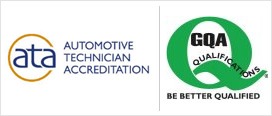Advanced Driver Assistance Systems, or ADAS, mark a transformative step in making our roads safer and driving smoother. These systems bring together a suite of smart technologies like cameras, sensors, and onboard computing to help you drive with better awareness and sharp precision, reflecting just how far vehicle innovation has come in integrating safety with the digital age.
The Components of ADAS
ADAS includes, but is not limited to, the following functionalities:
- Adaptive Cruise Control: Automatically adjusts vehicle speed to maintain a safe distance from the vehicle ahead.
- Lane Keeping Assistance: Helps keep the vehicle centred in its lane.
- Blind Spot Detection: Alerts the driver to vehicles in blind spots.
- Park Assist Systems: Aid in parking through guidance or automatic manoeuvres.
- Collision Avoidance: Applies brakes or takes corrective action to avoid accidents.
How ADAS Enhances Driving Safety
The primary goal of ADAS is to prevent accidents by providing crucial information and taking action in critical situations. For example, it can alert drivers to potential hazards, improve visibility, suggest corrective steering inputs, and even take control of the vehicle to prevent a collision. These systems are constantly evolving, integrating more sophisticated technologies to deliver higher levels of safety.
The Role of ADAS in Modern Vehicles
- Accident Prevention: Significantly reduces the likelihood of collisions.
- Driver Comfort: Eases the burden of driving, especially on long journeys.
- Insurance Benefits: This may lead to reduced premiums due to enhanced safety features.
The Intricacies of ADAS Calibration
Calibration of ADAS is a precise and technical process that ensures all the system’s sensors and cameras are correctly aligned, functioning accurately, and communicating effectively. It’s a critical step following windshield replacements, suspension repairs, or wheel alignment services.
Improper calibration can lead to malfunctioning ADAS, which not only nullifies the benefits of these systems but can also introduce new hazards on the road. It is imperative that ADAS calibration is performed by professionals who understand the intricacies of these systems and can ensure their optimal functionality.
Steps in the Calibration Process
The ADAS calibration process involves several steps, which may vary depending on the vehicle’s make and model. Generally, it includes:
- Initial Diagnostics: Checking for fault codes and ensuring all ADAS components are intact.
- Alignment Checks: Ensuring the vehicle’s wheels and steering are perfectly aligned.
- Sensor and Camera Calibration: Adjusting the sensors and cameras to the manufacturer’s specifications.
- Road Testing: Verifying that all systems operate correctly in real-world conditions.
When is Calibration Needed?
- Post-Collision Repairs: Essential to re-align and calibrate ADAS sensors after any repair work.
- Windshield Replacements: Since many ADAS sensors are mounted on or near the windshield.
- Suspension Adjustments: Any changes can affect the vehicle’s ride height, altering sensor angles.
ADAS: A Helping Hand, Not a Replacement
While ADAS significantly improves safety and convenience, it is crucial for drivers to remember that these systems are designed to assist, not replace, their judgement and skills. The responsibility for the vehicle’s operation remains firmly in the hands of the driver.
As technology advances, we can anticipate ADAS to become more integrated with vehicle systems, paving the way for semi-autonomous and fully autonomous vehicles. This evolution promises to transform our driving experiences, making roads safer and travel more comfortable.
Advanced Autoglazing: Your Partner for ADAS Windscreen Camera Calibration
Understanding the precision needed for ADAS systems, Advanced Autoglazing offers a specialised windscreen camera calibration service. When your vehicle undergoes windscreen replacement or other repairs that might disrupt ADAS alignment, our trained technicians ensure every camera and sensor is meticulously realigned to the manufacturer’s exact standards, maintaining the integrity of your vehicle’s safety features.
Conclusion: Embracing ADAS with Confidence
ADAS is a dynamic and integral part of modern automotive technology. With proper calibration and maintenance, these systems provide drivers with invaluable assistance, contributing to a safer driving environment for everyone on the road. As we move towards a more automated future, the calibration and understanding of ADAS will become ever more crucial. It’s an exciting time in the automotive world, and ADAS is at the forefront of this transformation.
Frequently Asked Questions
What exactly does ADAS do?
ADAS supports drivers by improving safety through advanced technology like sensors and cameras.
How often does ADAS need to be calibrated?
Calibration is needed after certain repairs or maintenance, like windscreen replacements or wheel alignments.
Can I calibrate ADAS myself?
Due to its complexity, ADAS calibration is best handled by professionals.
Does ADAS calibration affect my car warranty?
Professional calibration should not affect your warranty; in fact, it’s often a requirement to maintain it.
How long does the calibration process take?
It varies, but it’s a detailed process that can take a few hours to ensure everything is perfect.
Will my ADAS ever upgrade itself?
Some systems can receive updates, but major upgrades usually require professional installation.
Is ADAS calibration expensive?
Costs can vary, but considering the safety benefits, it’s a worthwhile investment.




